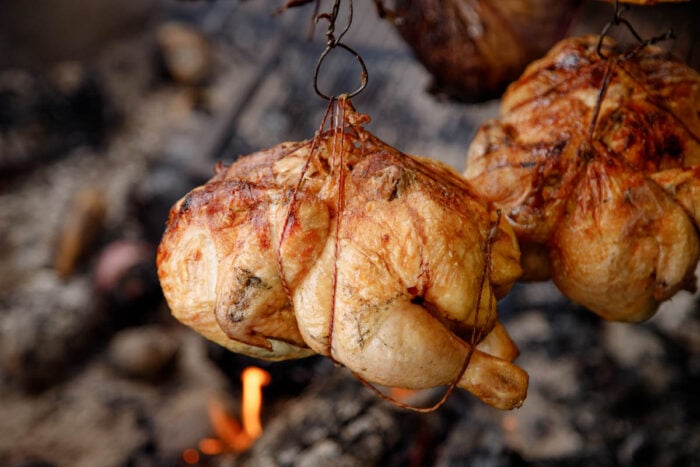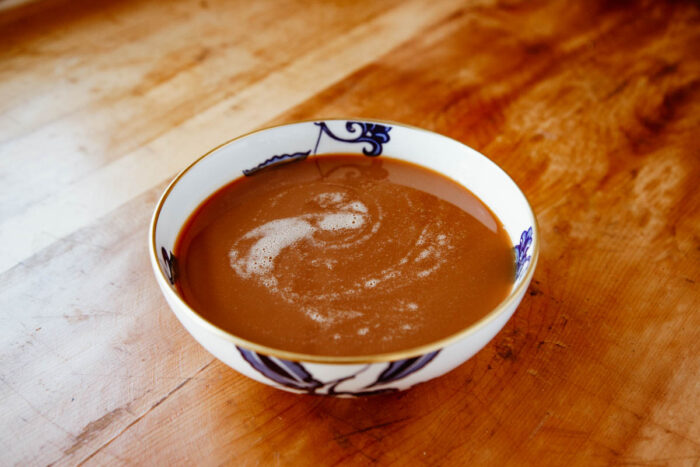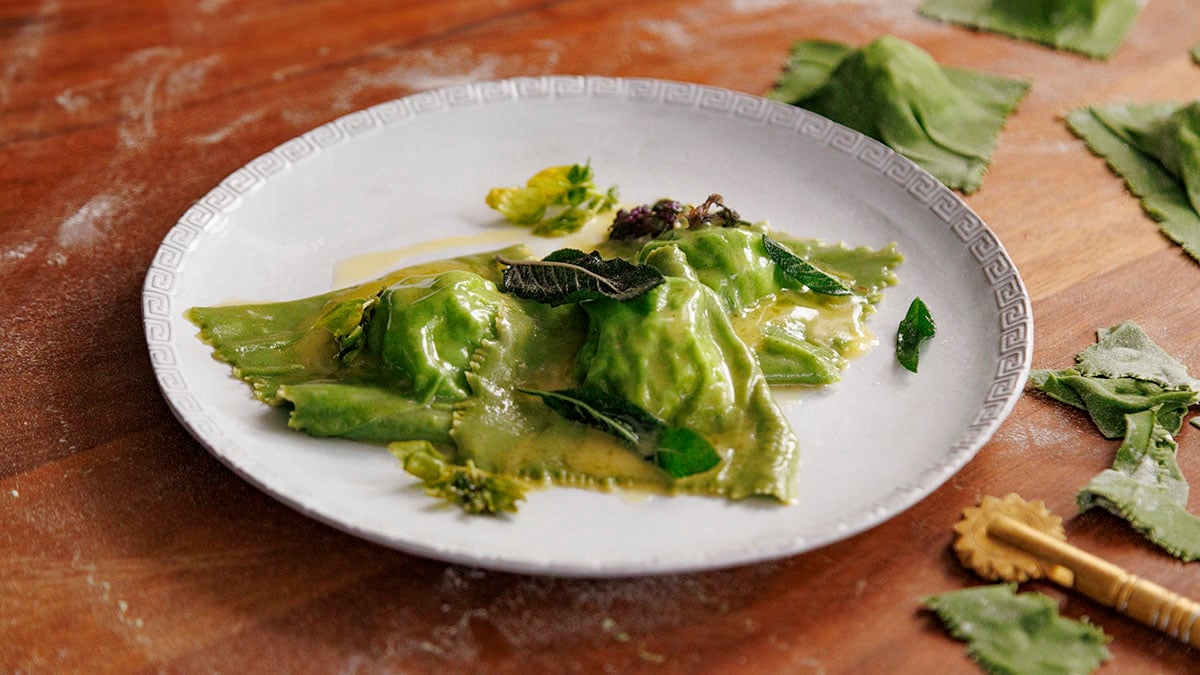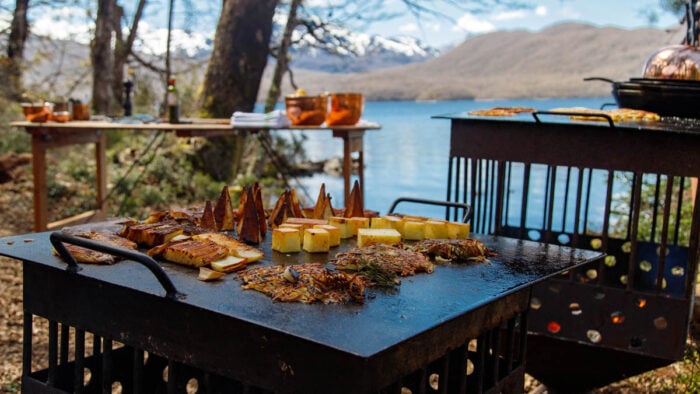
How to Make Delicious Challah Bread – A Comprehensive Guide
Written by the YesChef staff
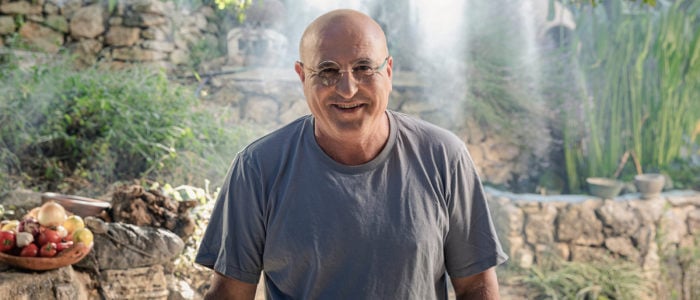
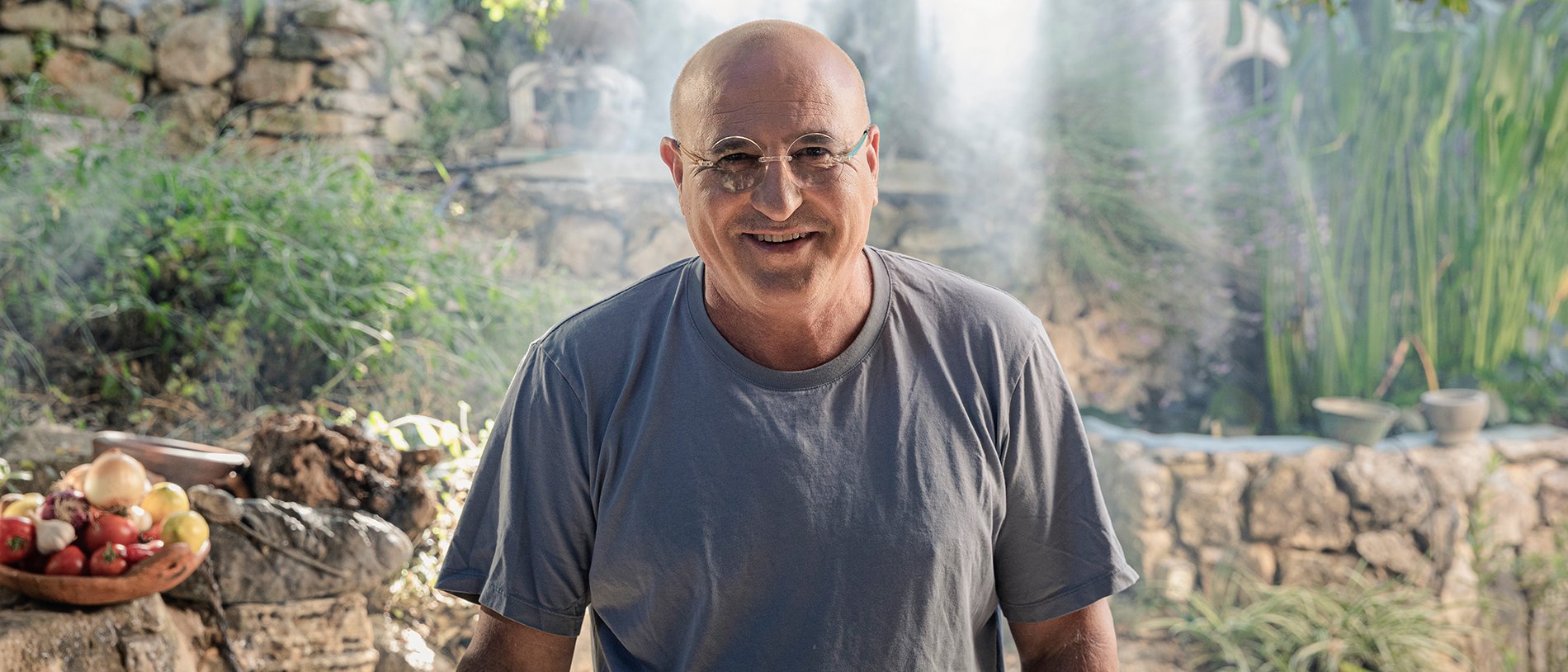
Get Access to an Ever-Growing Library of Classes
Every Subscription includes:
- Unlimited Streaming of all Classes
- Watch on your phone, tablet or laptop
- Story-driven Classes, Practical Lessons
- Recipes with Step-by-Step Guidance
- 30-day Satisfaction Guarantee
- New Lessons added all the time
$9.99/mo
Billed annually
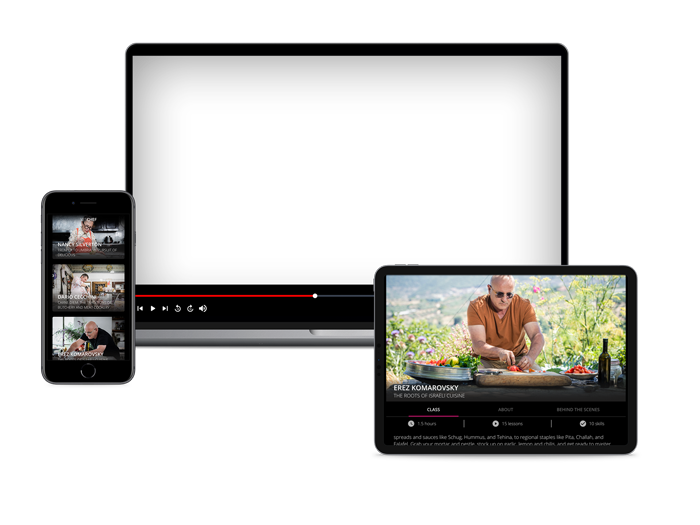
What is Challah Bread?
There are many variations of this moderately-sweet bread, including whole wheat, spelt, and rye challah. Braided challah bread can be stuffed with cheese or served plain. Challah is much like brioche bread in that it is light and fluffy, but brioche bread is often made with butter rather than oil and doesn’t come in the form of a braided loaf.
Origins of Challah Bread
Challah bread wasn’t always rich, eggy, and subtly-sweet. During the Middle Ages, challah was simple and plain-tasting. In 15th century Austria and Southern Germany, Jewish women began braiding challah, and much later in the United States, Eastern European Jewish immigrants sweetened challah bread considerably.
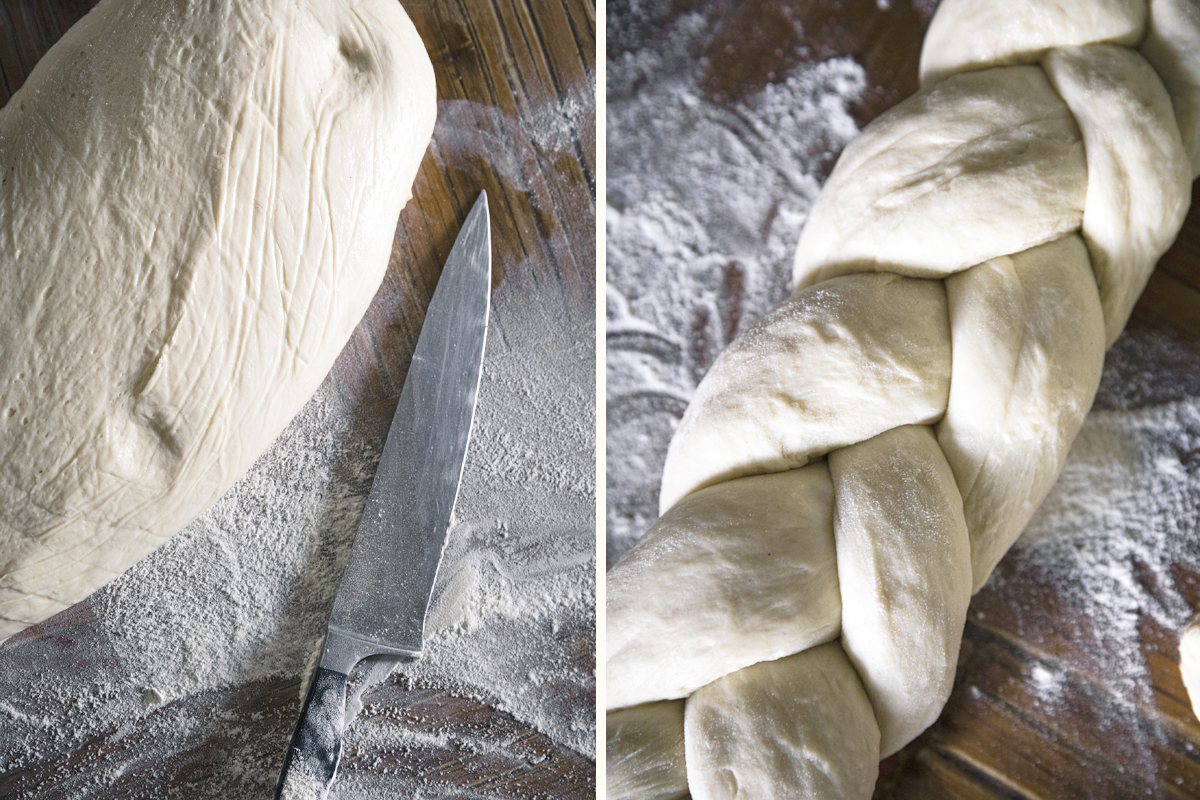
Main Ingredients of Challah Bread
Traditional Challah Braiding Techniques
Challah is traditionally braided into a three-strand rope before baking. It has been said that this technique is used to represent the unity of the Jewish people, as the strands of challah dough become one. It has also been claimed that the three strands represent justice, truth, and peace. There are other braiding techniques, including a four-strand, five-strand, and six-strand challah braid. Depending on the occasion, different braiding techniques may be used.
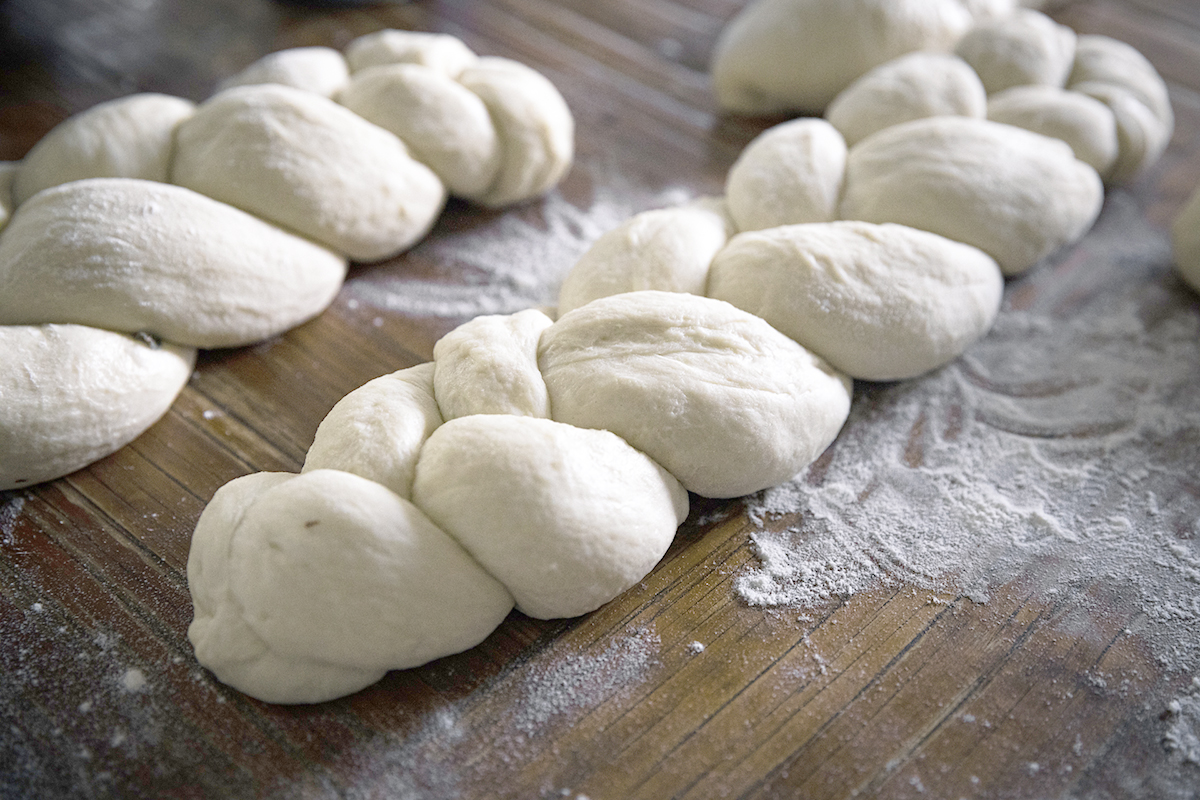
What Type of Oil Should I Use?
Challah Bread Recipes
When braiding his challah, Erez folds the dough into extra-long cylindrical shapes, almost like baguettes, ensuring they are pointy at each end. Erez makes two signature stuffed challah breads: one woven with fennel & sage blossoms, the other stuffed with savory Kashkaval cheese and garlic confit.
Here’s a brief summary of some of the different types of challah bread, from the plain and traditional to those topped with poppy or sesame seeds.
Plain: A traditional round loaf of braided egg bread, plain braided challah is popular for Shabbat meals and holidays such as Rosh Hashanah and Passover. It is also used for more everyday meals and is a popular accompaniment to soup and salads.
Chocolate Chip: This type of challah bread is great for people who love chocolate or for anyone with a sweet tooth. Making it involves adding chocolate chips to the challah dough towards the end of the kneading process, which ensures that the chocolate chips are evenly distributed throughout the dough.
Cinnamon Raisin: Featuring a delicious combination of cinnamon and raisins, this challah is great for breakfast. The cinnamon and raisins add a sweet flavor that can help satisfy a sweet tooth without the added sugar and calories. Cinnamon raisin challah is also a healthier option than cinnamon rolls because it is made with whole wheat flour and is usually made without added sugar.
Whole Wheat: For a more healthy twist on your challah recipe, try this whole wheat version. Whole wheat challah is made with whole wheat flour, which gives it a nuttier flavor and a denser texture than traditional challah.
Walnut: A nutty addition to the traditional braided challah bread recipe, walnut challah is a great way to add a bit of crunch to your meal. For a great flavor combination of sweet and crunchy, sometimes dates are added to this recipe.
Challah Rolls: Perfect for a side dish or snack, challah rolls are great for any occasion. They are round or braided in shape, and can contain sesame seeds, poppy seeds, or other toppings. They are often served with honey, jam, or butter. They’re also excellent for sandwiches.
Pumpkin: A seasonal twist on the traditional challah, this pumpkin version is perfect for the fall months. Pumpkin challah typically includes pumpkin puree, spices such as cinnamon, nutmeg, and cloves, and sometimes other ingredients such as nuts or raisins. These additional ingredients give this challah an original flavor and texture.
Sunflower Seed: For a nutty flavor, try sunflower seed challah. Sunflower seeds are packed with essential vitamins and minerals and are a great source of healthy fats and protein, adding more nutritional value to the bread.
Onion and Poppy Seed: This challah recipe combines onion and poppy seeds for a unique flavor. In addition to poppy seeds, sesame seeds are also commonly used with braided Jewish bread.
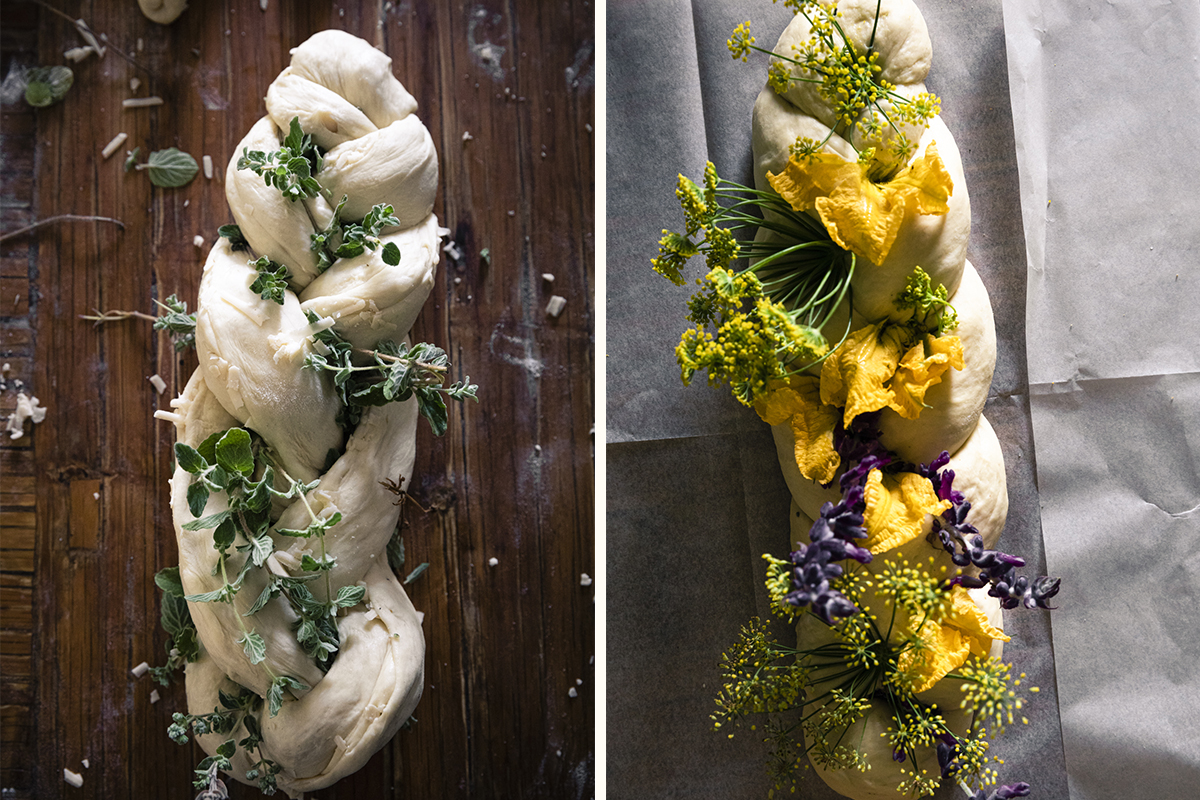
Tips for Making Challah Bread
- For the best challah bread taste, be sure to use the correct ingredients in the proper amounts. For example, you’ll need to bake with the right type of flour (An all-purpose or bread flour) and the right amount of yeast.
- Use room temperature ingredients. This will ensure that the dough rises properly.
- For his challah recipe, Erez uses three eggs for his challah dough: two egg yolks, and for the remaining egg he uses both the egg yolks as well as the egg white.
- Don’t over-mix the challah dough. Too much mixing can make the dough tough.
- After mixing the dough, Erez recommends coating a large bowl with unfiltered sunflower seed oil. This will help create a great flavor and aroma, and will prevent the dough from sticking.
- Once the dough is inside the bowl, flip the dough over so that the smooth part is on top, Erez recommends.
- Erez warns against covering the bowl with saran wrap, which will close off the oxygen. Rather, loosely cover the bowl with plastic wrap and let it sit at room temperature for 45 minutes.
- Let the challah dough rise twice. This will give the bread a better texture.
- Braid the dough correctly. Make sure to keep your strands even and taut while braiding.
- Don’t forget the egg wash. This will help give the bread a golden-brown color and a glossy finish.
- Bake the bread at the correct temperature: 325 degrees Fahrenheit. If the temperature is too low, the bread may not fully cook or rise. This can result in a dense, gummy texture and a raw center – and the crust may not be crisp and golden. Baking challah at too high of a temperature can cause the bread to burn.
- Let your challah cool before cutting or serving it. Place the challah on a cooling rack and allow it to cool for at least 30 minutes. If the challah is left too long on the baking sheet, it can become soggy.
- Leftover Challah Bread: If you are not serving your challah right away, you can wrap it in foil and store it at room temperature for up to a few days.
- To freeze challah bread, wrap the bread in plastic wrap or foil and place it in a freezer-safe bag or container. Label the bag or container with the date and freeze for up to 3 months. Securing it tightly in plastic wrap or aluminum foil will prevent freezer burn.
- To thaw, let the bread sit at room temperature for a few hours or overnight.
How to Bake Challah Bread
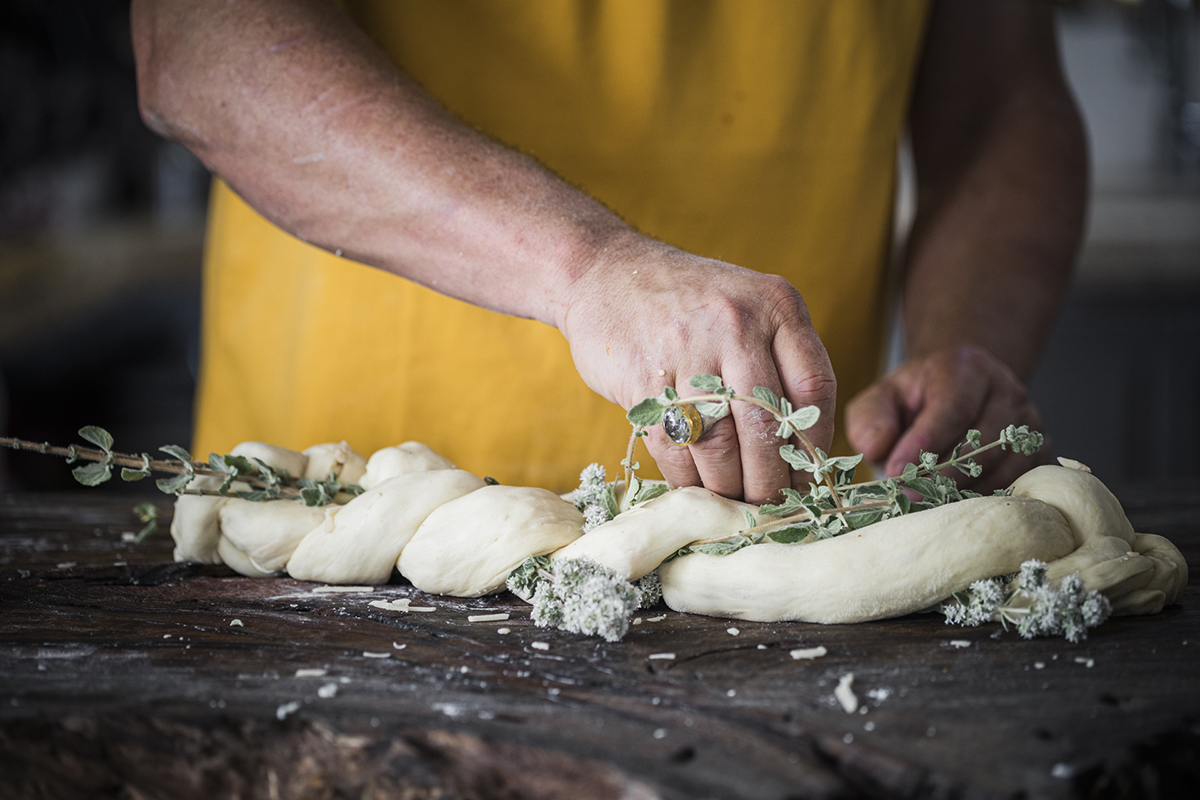
Challah Bread Uses
Challah bread has a variety of uses. It makes the best French toast, grilled cheese sandwiches, Thanksgiving stuffing, and base for bread pudding. It can also be used as an edible scoop for dips and spreads, or as an accompaniment to soups and salads. As whole fresh loaves of braided challah, it can also make for a beautiful golden brown focal point for your dinner table. And challah rolls are superb for making deli sandwiches and to toast in the morning as part of your breakfast.
Conclusion
Whether it’s being baked for symbolic and religious reasons or not, challah is a delicious and one-of-a-kind bread that can improve the quality of many meals. It is incredible as a Thanksgiving stuffing, perfect for French Toast, never disappointing as a bread or roll for your sandwich, and aesthetically pleasing as the centerpiece for a special family dinner – or for Jewish holidays like Rosh Hashanah. For all these reasons and more, fresh golden brown challah bread is an excellent food to know how to make.
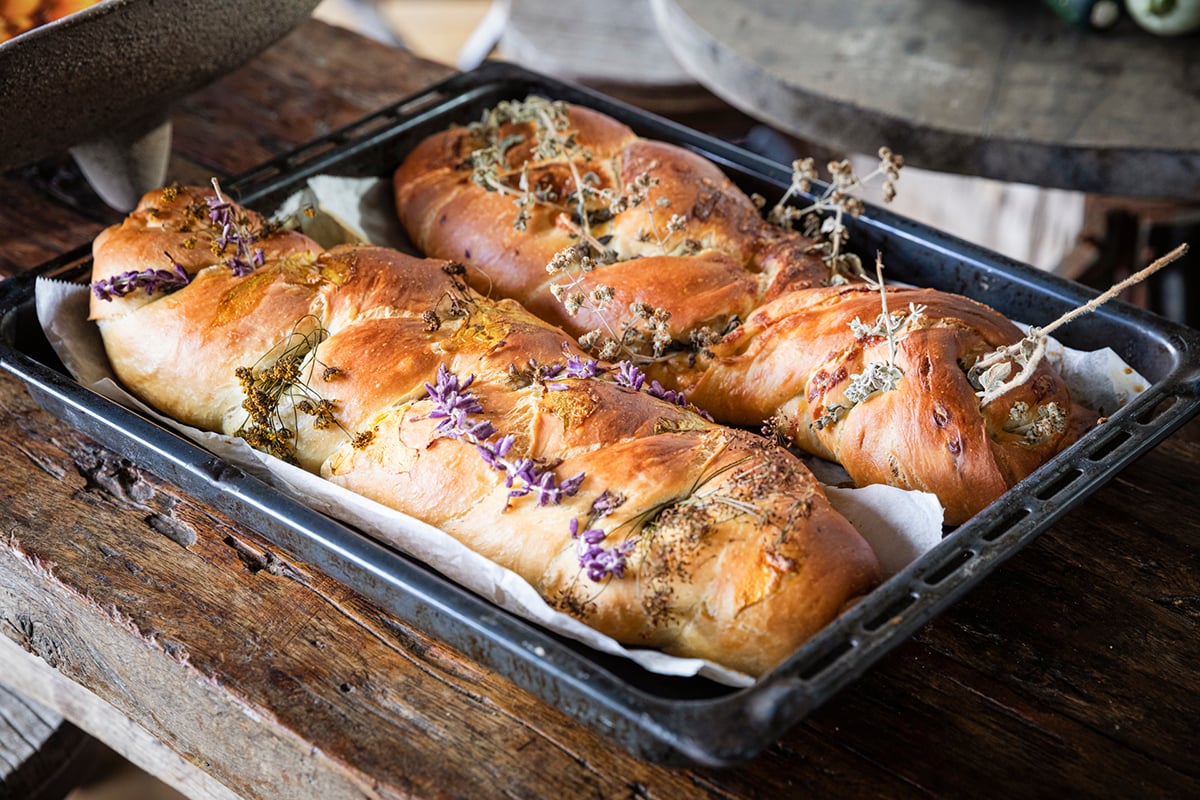
Erez Komarovsky Challah
Ingredients
- 1 kilogram unbleached white flour
or bread flour
- 1 kilogram bread flour
- 1/2 liter cold water
- 170 grams unrefined sunflower oil
- 1 egg
- 3 eggs
1 whole egg and 2 egg yolks
- 70 grams natural cane sugar
- 30 grams fresh yeast
per 1 kg of flour
- Unbleached white flour
- 20 grams fine salt
- 6 strands challah dough
- Fennel blossoms
substitute with tarragon leaves or roses
- Sage blossoms
- Roses
- Tarragon leaves
- Zucchini flowers
- 400 grams Pecorino-Romano cheese
grated
- 400 grams Parmigiano-Reggiano
grated
- 1 1/2 cups oregano
- Marjoram leaves
- 1 1/2 cups hyssop leaves
separated, plus a few branches for decorating the challah
- 2 1/2 cups garlic confit
strained
- Matbucha
to accompany the challah bread
- 400 grams kashkaval cheese
high quality, grated
GEAR
- Standing electric mixer
- 1 large mixing bowl
- Plastic wrap
- Plastic wrap
- Baking tray
- Kitchen scissors
- Cutting board
- Parchment paper
- 1 small bowl
- Pastry brush
- 1 large decorative platter
- Sheet pan
Recipe
- Sift white flour and combine with cold water in the bowl of a large standing electric mixer.
- Add oil, egg yolks, and sugar.
- Take a handful of flour, combine with fresh yeast, and crumble with your fingers into the electric mixer bowl.
- Fit the mixer with a paddle attachment and mix on low speed for about 8 minutes.
- Add more flour, salt, and keep kneading at a higher speed until the desired consistency is achieved.
- Pour some sunflower oil into a large bowl and place dough in the bowl.
- Fold the dough inwards as you rotate it to coat the entire dough.
- Flip it over so the smooth side is facing up.
- Loosely cover your bowl with a plastic bag and let it rise for 45 minutes.
- After 45 minutes, uncover the bowl and remove dough to a lightly dusted surface.
- Fold the dough once: from the left, right, back and front, flip and place back in the same bowl.
- Cover again with the bag and let rise another 45 minutes.
- Repeat this last step once more after 45 minutes.
- After about a total of 2 hours, uncover the bowl, and remove dough to a lightly dusted surface.
- Divide the dough in half, and then each half into three, so you have 6 logs of around the same size.
- Mold into log shapes, dust with more flour, cover with the same bag.
- Let them rest for 30 minutes on the prepared sheet tray.
- After 30 minutes of your dough resting, place the logs on a dusted surface.
- One at a time, fold the doughs inwards, into themselves several times.
- Using your hands, roll and form long logs, about 45 cm, or 18 inches, in length.
- To braid, cross the right strand into the middle and the left strand into the center.
- Repeat the process until you have a braided challah, and pinch at the end.
- Stick fennel flowers, sage blossoms, and zucchini flowers in between the braided strands.
- Transfer to parchment paper and let it rise for 1½ hours.
- For the stuffed challah, place three logs onto a lightly dusted surface.
- Using the tips of your fingers, spread the dough out into a large rectangular shape.
- Gently pull and snap the dough in the air to create the desired shape.
- Each one should be roughly 35 cm by 15 cm, or 14 inches by 6 inches, in size.
- Generously fill each one with the confit garlic cloves and grated cheese.
- Separate hyssop leaves from their stems and add them on top of the dough.
- Fold and pinch the edges to seal, using your finger to push back any excess stuffing.
- Gently roll out and lengthen to about 45 cm, or 18 inches, in length.
- Place the 3 strands side by side and add fresh hyssop stems and leaves in between them.
- Braid the strands, crossing the left strand into the middle and the right strand in between the 2 strands.
- Place the challah on a parchment paper and add more of the kashkaval cheese on top.
- Transfer to a baking tray and rest for 90 minutes.
- Cover with a plastic wrap and let it rise for 1½ hours at room temperature.
- Adjust your baking sheet to the lower rack of the oven and preheat it to 325°F, 15 minutes before baking.
- Cut parchment paper in the middle so that each braided challah is on its own.
- Carefully transfer the challah along with its parchment paper into the heated baking sheet.
- Whisk an egg, a little water, and salt, in a bowl until well combined.
- Use the egg wash to baste the challah, except for the flowers and herbs, and immediately transfer to the lower third rack in your oven.
- To keep it humid, pour water over the lower racks and bake for 30 minutes.
- Create a bed of hyssop herbs and another of flowers on 2 different decorative platters.
- Serve your stuffed challah on top of the hyssop and the other challah on the flowers.
- Serve with a bowl of matbucha on the side.




